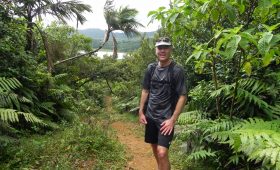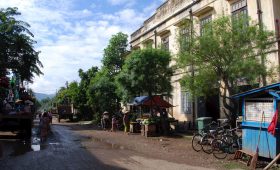Djoudj National Bird Sanctuary: A Natural Wonder in Senegal
The Unique Beauty of Djoudj National Bird Sanctuary
Situated in northwestern Senegal, Djoudj National Bird Sanctuary spans 16,000 hectares and is recognized as a UNESCO World Heritage Site. This sanctuary is renowned for its vast array of bird species, with nearly three million birds recorded, making it the world’s third-largest ornithological reserve.
The sanctuary is a haven for birdwatchers, offering the chance to observe large colonies of birds, including flamingos and pelicans. The freshwater wetlands within the sanctuary serve as a crucial stopover for migratory birds traveling between Europe and Africa, providing an awe-inspiring spectacle of avian life.
Beyond its birdlife, Djoudj is home to diverse wildlife, including crocodiles and the rare West African manatee. The sanctuary’s rich biodiversity offers visitors a glimpse into a vibrant ecosystem.
Environmental Challenges
Since the construction of the Diama Dam on the Senegal River in 1988, the sanctuary has faced environmental challenges. The dam has led to changes in water levels, desalinization, and silting, which threaten the local flora and fauna. The proliferation of invasive plant species like typhas and Phragmites is a concern for the ecosystem’s balance.
Best Time to Visit Djoudj National Bird Sanctuary
The ideal time to visit is during the dry season, from November to April. During this period, lower water levels create optimal conditions for birdwatching and wildlife observation. However, be prepared for high temperatures, often exceeding 30 degrees Celsius. Pack lightweight clothing, sunscreen, and a hat to stay comfortable.
How to Get to Djoudj National Bird Sanctuary
The sanctuary is accessible via the town of Saint-Louis, which can be reached by road or air from Dakar, Senegal’s capital. From Saint-Louis, the sanctuary is a 30-minute drive. Hiring a local guide or joining a guided tour is recommended for a more informative experience.
Local Transportation and Accommodation
Exploring the sanctuary by boat is a popular option, allowing visitors to navigate the wetlands and observe bird colonies up close. Local operators typically organize these tours.
Accommodation options vary. For an immersive experience, consider staying in an eco-lodge within the sanctuary, where you can wake up to the sounds of nature. Alternatively, Saint-Louis offers a range of hotels and guesthouses to suit different budgets. Booking in advance is advisable, especially during peak season.
Djoudj National Bird Sanctuary offers a unique opportunity to experience Senegal’s natural beauty and biodiversity. While environmental challenges persist, the sanctuary remains a vital refuge for wildlife and a remarkable destination for nature enthusiasts.




